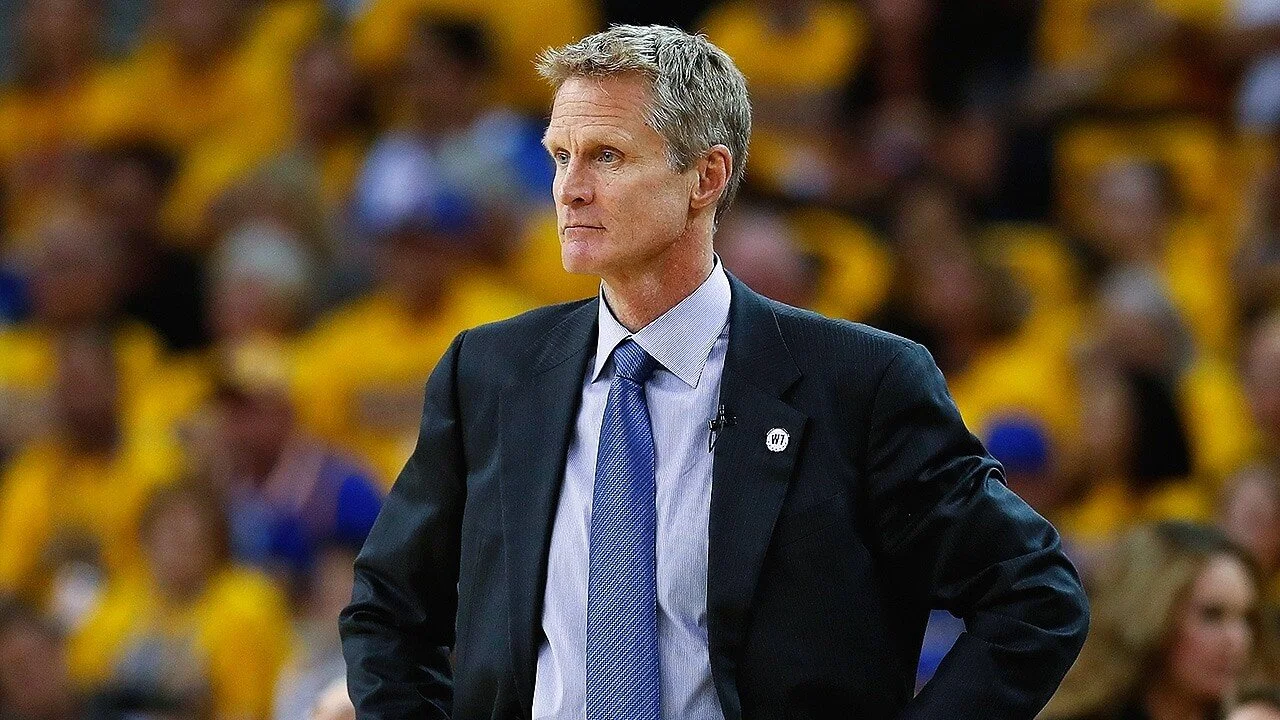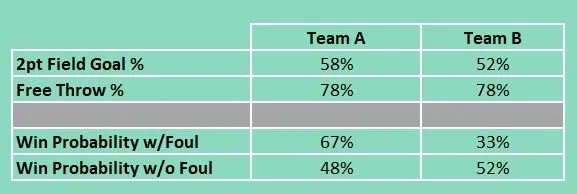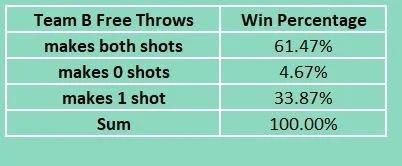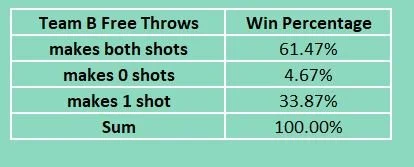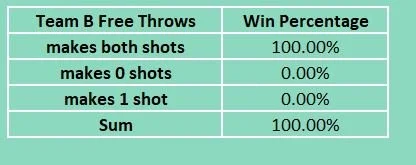Should You Intentionally Foul With a 1-Point Lead to Secure the Final Possession?
Photo Credit: NBA.com
In recent decades, NBA analytics have prompted intriguing late-game strategic choices, such as deliberately fouling an opponent when holding a 3-point lead with minimal time left on the clock. By sending your opponent to the free-throw line for two shots, you ensure maintaining the lead and regaining possession, barring an offensive rebound off of a missed free throw. Subsequently, your opponent will be forced to foul you. This tactic holds appeal if your team excels at free throw shooting. Moreover, if your opponent has exhausted its timeouts and cannot advance the ball to half court when inbounding for a final shot, employing this strategy might force them into a desperate, low-probability attempt rather than a controlled possession.
In this analysis, I’ll consider a different situation which may also recommend an intentional foul:
Team A is leading Team B by one point. Team B has the ball with 10 seconds to go. If Team B’s two-point field goal percentage is higher than 50%, which is the case for 29 of the 30 teams in the NBA this season, they could be the favorite to win the game, despite trailing by one point. In which situations can an intentional foul by Team A swing the win probability back in their favor?
Let’s take a look at three scenarios to assess this.
Scenario 1
In Scenario 1, Team A is an elite two-point shooting team and Team B is a subpar two-point shooting team. Both teams are league average free throw shooting teams.
Table 1a: Scenario 1 for an intentional foul with a 1-point lead
Table 1b: Team B Free Throw probability distribution
If Team A does not intentionally foul Team B, Team A has a 48% chance of winning. If Team A does intentionally foul, it’s chance shoots up to 67%, assuming Team B does not return the favor and intentionally foul again. Team B, however, should intentionally foul as well as long as there is still enough time left on the clock for them to get off an average two-point attempt.
A sensitivity analysis on Team A’s two-point field goal percentage shows that Team A should be intentionally fouling as long as its two-point field goal percentage is higher than 35%— which in fact applies to every team in the NBA.
Scenario 2
A very unlikely Scenario 2, where Team A would not want to intentionally foul, is shown below.
Table 2a: Scenario 2 for an intentional foul with a 1-point lead
Table 2b: Team B Free Throw probability distribution
Since Team A is such a poor two-point shooting team in Scenario 2, it is better off allowing Team B to take the final shot.
Scenario 3
If Team A were guaranteed the last shot after fouling, then even in a scenario in which Team B’s free throw percentage were 100% - Scenario 3 - fouling would be the right play for Team A. Team A would gain less by fouling in Scenario 3 than it did in Scenario 1, but it would still flip the odds in its favor.
Table 3a: Scenario 3 for an intentional foul with a 1-point lead
Table 3a: Team B Free Throw probability distribution
Conclusion
The strategic advantage of fouling with a 1-point lead, given a guarantee of the final possession in regulation, is evident. Thus, the focus of this analysis should shift to the timing of the foul. Assuming Team B has a full 24 seconds on both the shot clock and game clock, Team A should foul immediately if it has a free throw percentage advantage. A prolonged sequence of foul exchanges benefits the team with a higher free throw percentage. However, if Team A's free throw shooting is inferior to Team B's, it should foul strategically to leave just enough time on the clock for an average two-point attempt. Leaving too little time may result in an inadequate shot for Team A, undermining the intentional foul strategy. Conversely, leaving too much time allows Team B to foul back and regain the advantage of the final possession.
